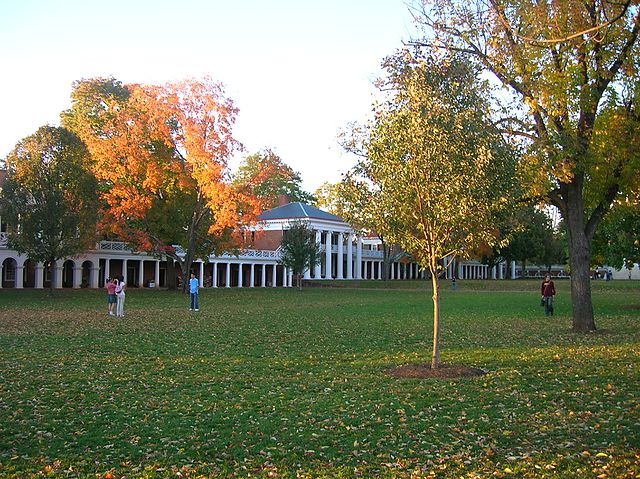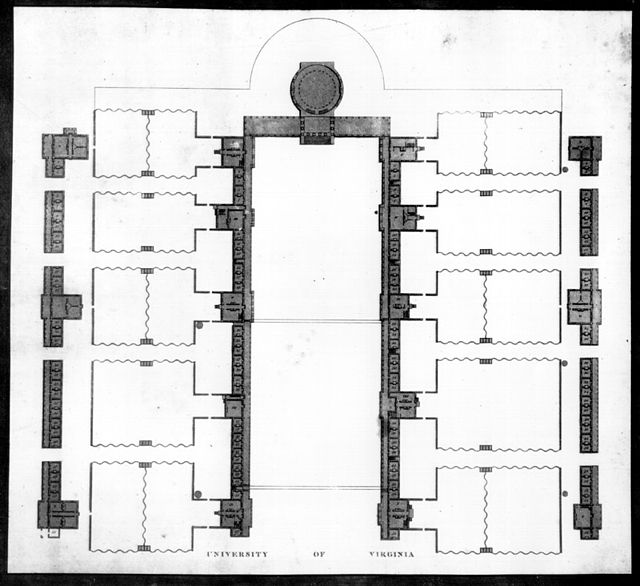The Lawn, a part of Thomas Jefferson's Academical Village, is a large, terraced grassy court at the historic center of Jefferson's academic community at the University of Virginia. The Lawn and its surrounding buildings, designed by Jefferson, demonstrate Jefferson's mastery of Palladian and Neoclassical architecture, and the site has been recognized as an architectural masterpiece in itself. The Lawn has been designated a U.S. National Historic Landmark District, and is part of a UNESCO World Heritage Site along with the original buildings of the University of Virginia and Monticello, Jefferson's nearby residence; this designation is due to the site's architectural and cultural significance.
The Lawn in October 2006
Engraving by Peter Maverick of the plan of the University of Virginia, after Jefferson's drawing, 1826.
Steel engraving, 1831
1856 engraving of the Lawn, looking north
The University of Virginia (UVA) is a public research university in Charlottesville, Virginia, United States. It was founded in 1819 by Thomas Jefferson and contains his Academical Village, a UNESCO World Heritage Site. The original governing Board of Visitors included three U.S. presidents: Jefferson, James Madison, and James Monroe, the latter as sitting president of the United States at the time of its foundation. As its first two rectors, Presidents Jefferson and Madison played key roles in the university's foundation, with Jefferson designing both the original courses of study and the university's architecture. Located within its historic 1,135-acre central campus, the university is composed of eight undergraduate and three professional schools: the School of Law, the Darden School of Business, and the School of Medicine.
Thomas Jefferson, the university's founder, by Charles Willson Peale (1791)
The Rotunda, as pictured from the South Lawn
James Madison was the second rector of the University of Virginia until 1836.
Edwin Alderman was UVA's first president between 1904 and 1931 and instituted many reforms toward modernization.








